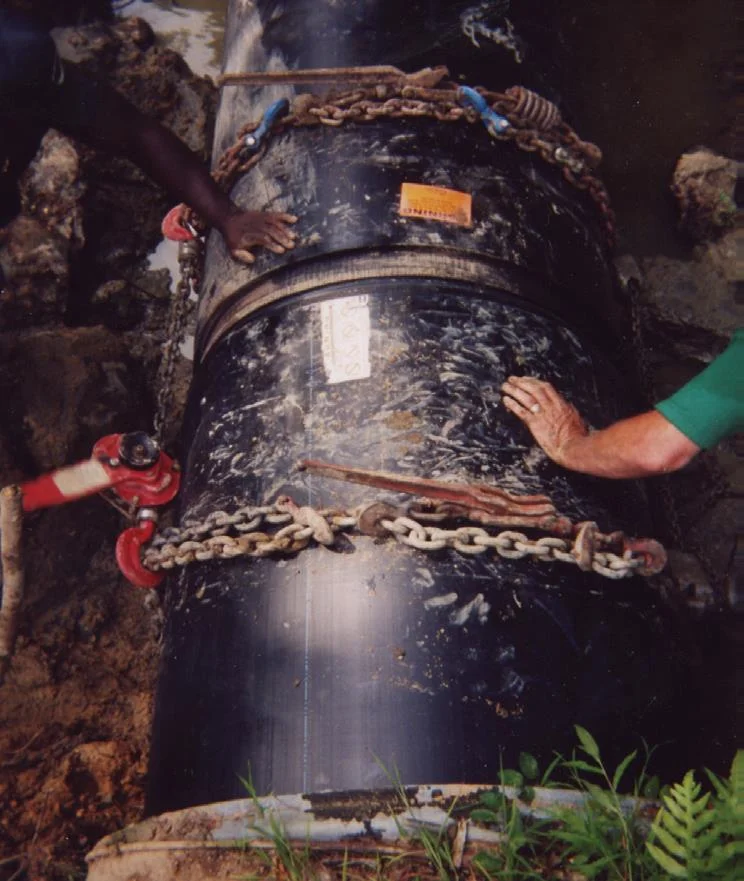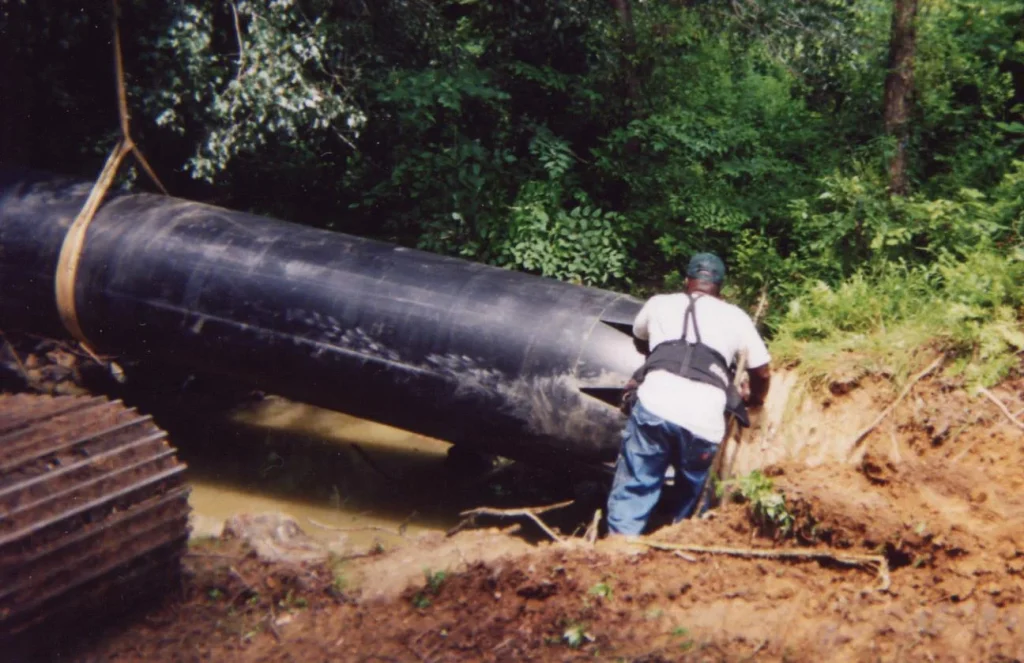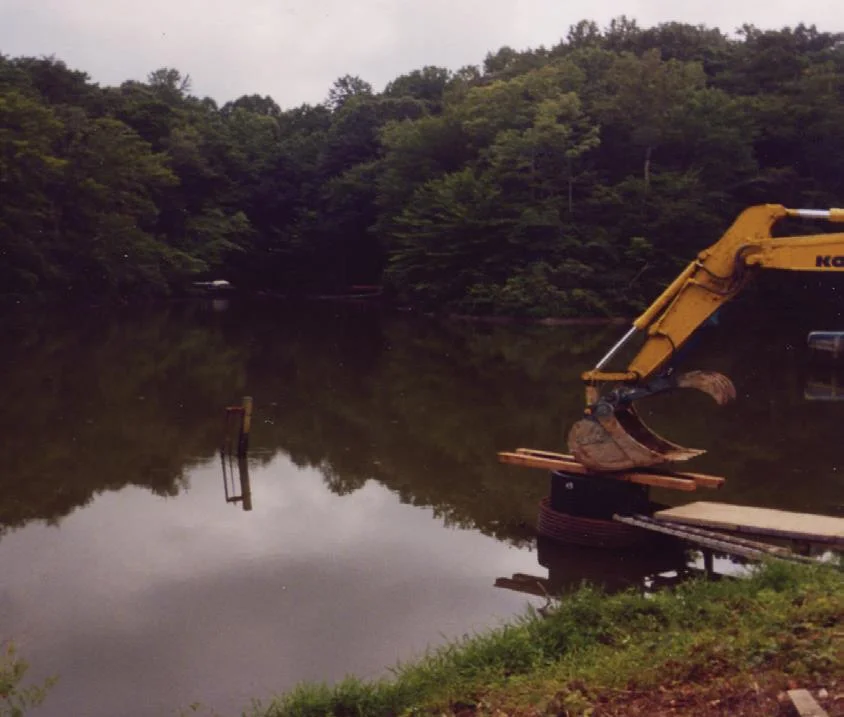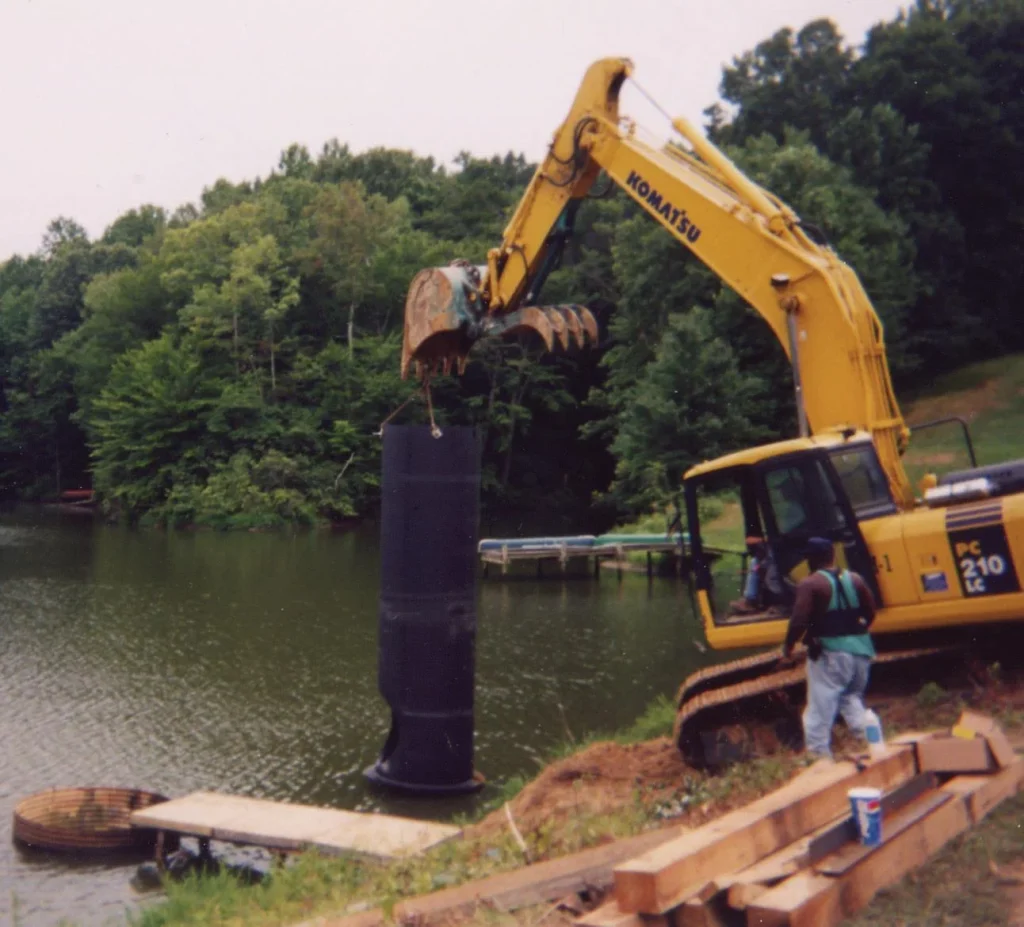Resources
Field Reports
Snap-Tite Dunkirk, MD




Our purpose is to help customers choose solutions which will insure that the process fits the application and do this reliably and cost-effectively. All information in this Field Report will assist the engineer to reduce cost and minimize future maintenance costs.
In addition, this Field Report will help the task of communicating that these are solutions in use today with a proven track record of installation and use.
Abstract
Many small to medium sized dams constructed in the 1960s and 1970s utilized corrugated metal pipe conduits for the principal spillway. Many of these structures have reached the end of their useful life because of deterioration of the pipes by corrosion. This Field Report presents an existing application where deteriorated pipes were rehabilitated using polyethylene pipe for sliplining existing spillways.
Introduction
Ferry Landing Woods Homeowners Association, Dunkirk, MD had a corrugated metal pipe spillway that was deteriorating and presented a costly dilemma. Conventional methods were expensive and time consuming. There was a need to evaluate a less costly alternative repair method.
The Problem
A rusted 48-inch ID CMP spillway was under a berm dam on the property of Ferry Landing Woods Homeowners Association’s property. Draining the pond and digging and replacing the old pipe would be very costly.
The Solution Applied
Andy Cary, the Snap-Tite sales representative in Dunkirk, MD, worked with Michael L. Rodevick, P.E. of R.A. Barrett & Associates, and the general contractor, Morgan Russell. Snap-Tite pipe was the used to slipline the spillway and the riser pipe was rehabbed using HDPE riser pipe. No major digging was required to complete the job. Because of Snap-Tite’s “snap” joint, this eliminates the expensive butt fusion process and increases the speed and ease of installation. The Snap-Tite joint features a water tight gasket to withstand the grouting application.
After clearing the existing spillway of debris, a factory-installed nose cone was used on the first Snap-Tite pipe length to help pull the pipe into place. As each Snap-Tite pipe length is slid into place the male end is connected into the female end of the preceding pipe section. The crews tightened each come-a-long independently to make the connection fit easier. Doing this deflects the pipe for an easier fit. This was done for each Snap-Tite pipe length until the entire spillway was slip lined with Snap-Tite pipe. Next the riser pipe assembly is lowered into the existing CMP riser pipe. Finally the riser pipe and the Snap-Tite spillway pipe are positioned together, the Snap-Tite liner is machined off to fit the curvature of the riser and then fusion welded into place. Finally, the annular space, the space between the old CMP and the new pipe, is filled with grout.


